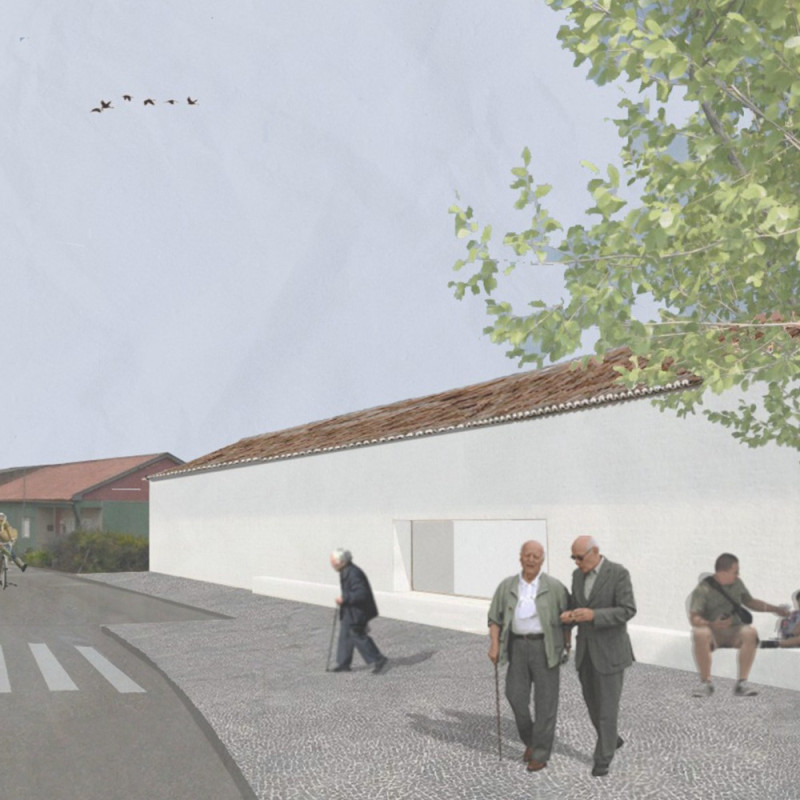5 key facts about this project
At its core, the project is designed to facilitate various functions that cater to both individual and community needs. Thoughtfully considered spaces encourage interaction, collaboration, and relaxation, creating an inviting atmosphere where occupants can engage comfortably. The layout of the building is organized to promote natural movement, guiding visitors through its corridors and communal areas with ease. This intuitive design enhances the flow of activity while ensuring that all spaces serve their intended purposes effectively.
One of the crucial aspects of the project is its materiality. The selection of materials is both practical and evocative, contributing not only to the visual identity of the project but also to its overall sustainability. The use of local materials reduces the carbon footprint associated with transportation and supports the local economy. Textured surfaces, such as wood and stone, are juxtaposed against smoother elements like glass and steel, creating a tactile richness that invites exploration. This thoughtful combination not only enhances the aesthetics but also provides durability and longevity, ensuring that the structure can withstand the test of time.
Unique design approaches are evident throughout the project. For instance, the incorporation of green elements into the design emphasizes a commitment to environmental stewardship. Features such as rooftop gardens, rainwater harvesting systems, and strategically placed windows maximize natural light while minimizing energy consumption. These sustainable solutions reflect contemporary architectural practices that prioritize ecological sensitivity, ultimately fostering a harmonious relationship between the building and its surroundings.
Additionally, the project showcases an innovative approach to spatial organization. Zones are carefully delineated to balance public and private areas, addressing the diverse needs of users. Community spaces are designed to foster social interaction, while quiet zones allow for contemplation and focus. This balance of spaces not only enhances the user experience but also reinforces the project's function as a community hub.
The project is characterized by its attention to detail, with every element intentionally crafted to serve a purpose. The architectural elements, from the façade treatment to the interiors, contribute to a cohesive narrative that enhances both the visual and functional aspects of the design. This meticulous approach to every detail ensures that every aspect of the architecture contributes to a larger story that resonates with the community it serves.
In exploring the architectural plans and sections, one can gain a deeper understanding of the design's nuances and functionality. The architectural designs reveal how each space integrates with one another while aligning with the overarching vision of the project. By reviewing various architectural ideas proposed in this project, it becomes clear how thoughtful design can address both practical needs and aesthetic desires, creating spaces that enrich the experience of those who inhabit them.
For those interested in gaining further insights, the project presentation offers a wealth of information on the architectural designs and sections that illuminate the intricate planning and thought processes behind this endeavor. Engaging with these elements will provide a comprehensive view of how this architectural project not only meets the needs of its users but also stands as a testament to thoughtful design in today's architectural landscape.


























